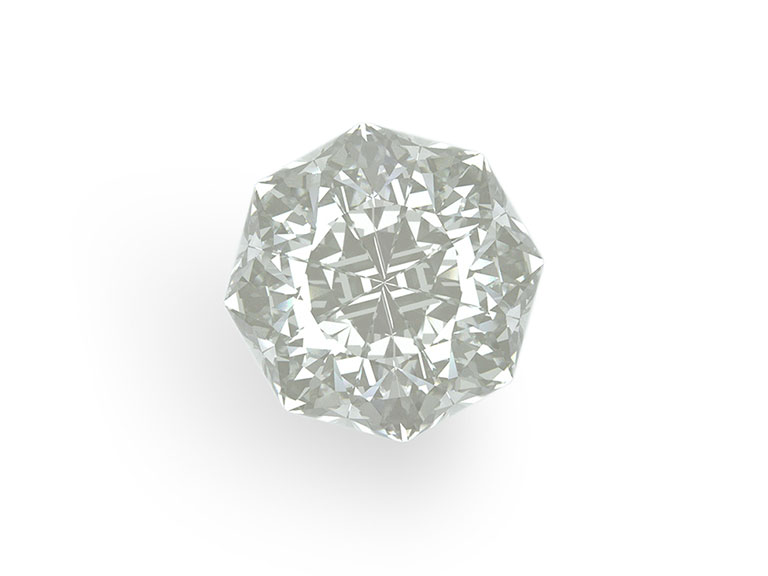The 4Cs
The 4Cs of diamond grading
Two diamonds of the same size may appear identical to the naked eye. However, they each could have a very different value upon closer examination.
The globally accepted standards for a diamond’s evaluation were developed by GIA (Gemological Institute of America) in 1953 in an effort to create a uniform language in which anyone around the world could communicate when describing the quality and properties of a diamond.
These standards are known as the 4Cs: Colour, Clarity, Cut and Carat.
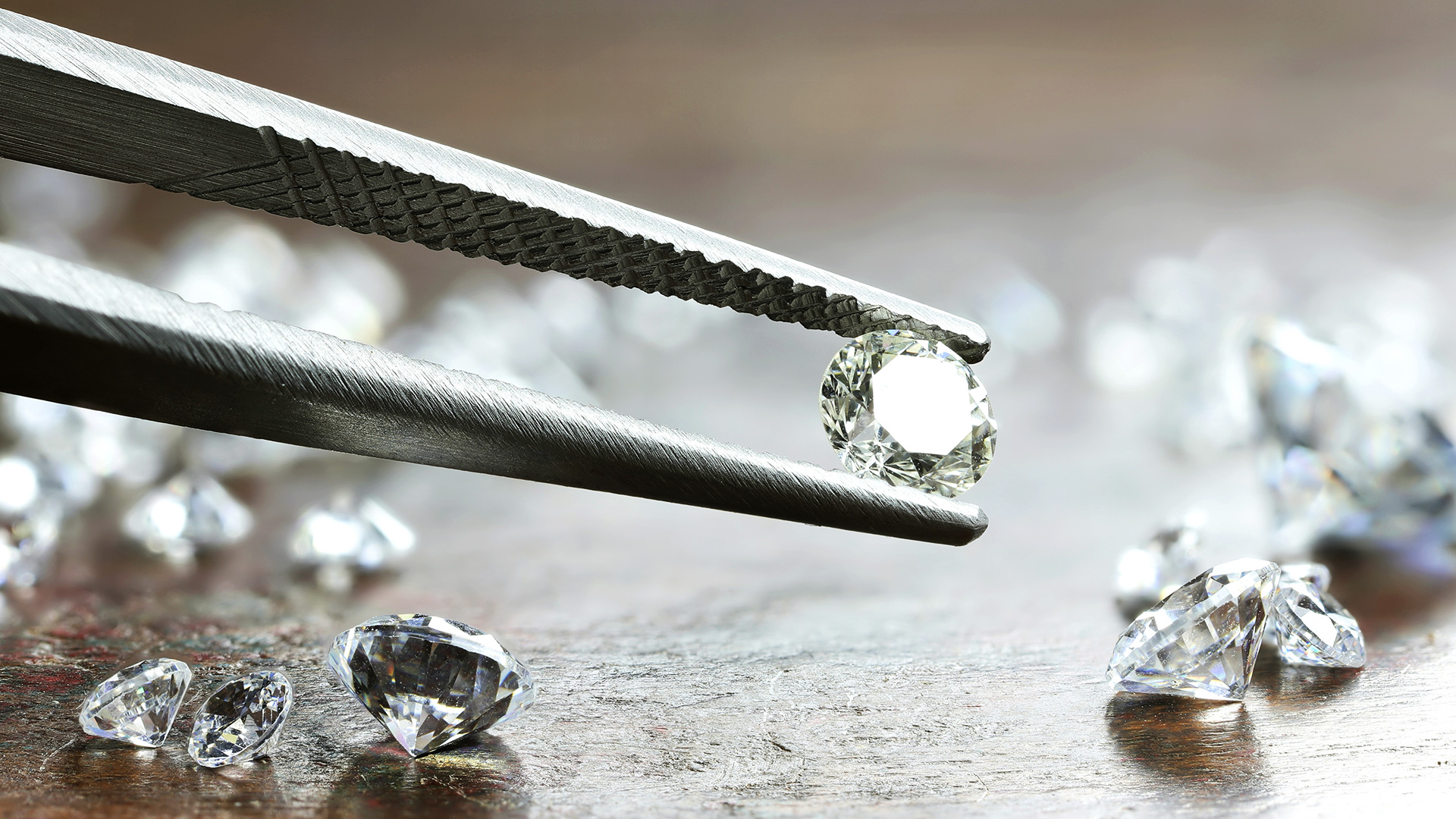
Colour
Colour grading scale
The GIA colour grading scale ranges from D to Z, with D grade diamonds being fully colourless and Z grade diamonds having a yellow hue.
A diamond with a D colour grade is the most valuable.
The range of standard colourless investment diamonds goes from D to G.
Clarity
Clarity grading scale
Eleven clarity grades make up the GIA grading system, ranging from flawless to included.
While flawless diamonds are extremely rare, the majority of diamonds have varying degrees of natural inclusions and blemishes.
These characteristics also help identify each individual stone.
Flawless
No inclusions and no blemishes visible to a skilled grader using 10x magnification.Internally Flawless
No inclusions and only blemishes are visible to a skilled grader using 10x magnification.Very Very Slightly included
Minute inclusions that range from extremely difficult to very difficult to see are visible to a skilled grader using 10x magnification.Very Slightly Included
Minor inclusions that range from difficult to somewhat easy to see are visible to a skilled grader using 10x magnification.Slightly Included
Noticeable inclusions that range from easy to very easy to see are visible to a skilled grader using 10x magnification.Included
Obvious inclusions are visible to a skilled grader using 10x magnification and may affect transparency and brilliance.Cut
Cut grading scale
GIA assigns 5 cut grades to polished round brilliant cut diamonds, which are: Excellent, Very Good, Good, Fair, and Poor.
Only round brilliant cut diamonds receive a Cut grade from GIA, due to their symmetry and specific cut ratio formula, to unlock the most amount of fire and light dispersion.
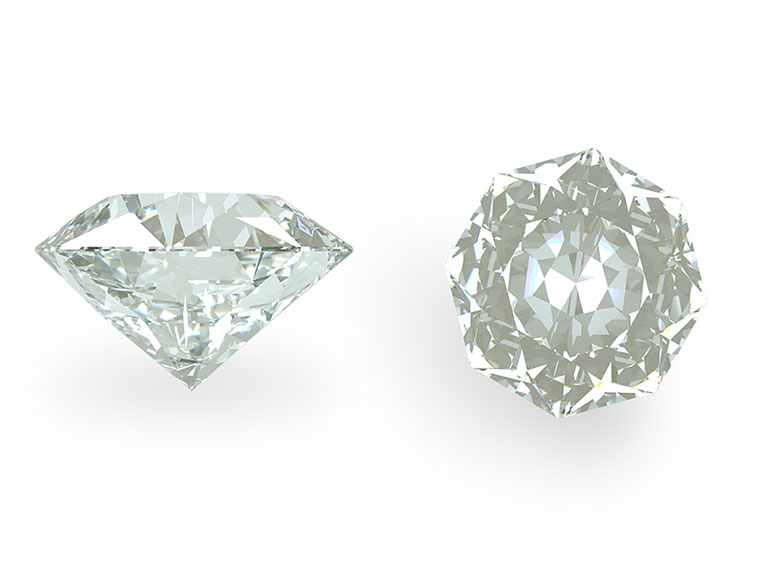
Excellent
The diamond, which has an even pattern of bright and dark areas, scores in the top category for all grade-setting determinants.
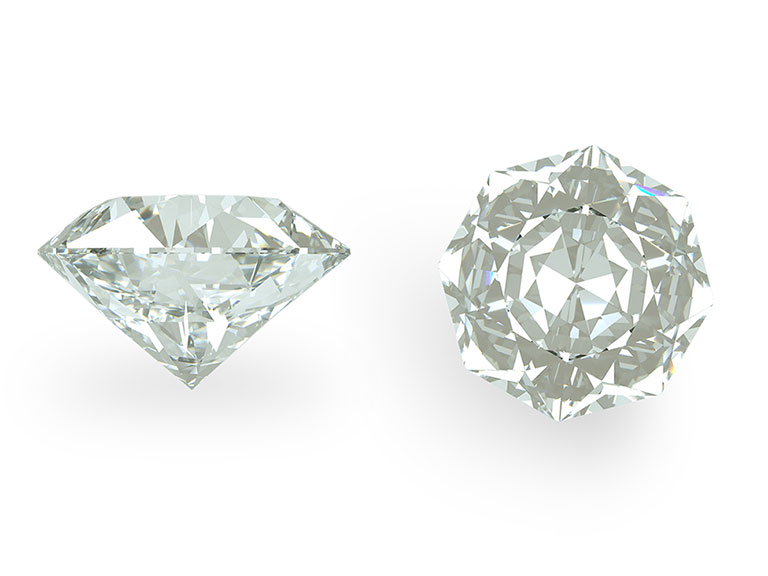
Very good
This diamonds grade is determined by brightness, scintillation, and polish. Although no individual proportions would necessarily cause its brightness or scintillation to perform poorly, the combination of this particular set of proportions leads to increased darkness in the pavilion mains.

Good
This diamonds grade is limited by its scintillation. In this case, the somewhat shallow pavilion angle produces dark pavilion mains.
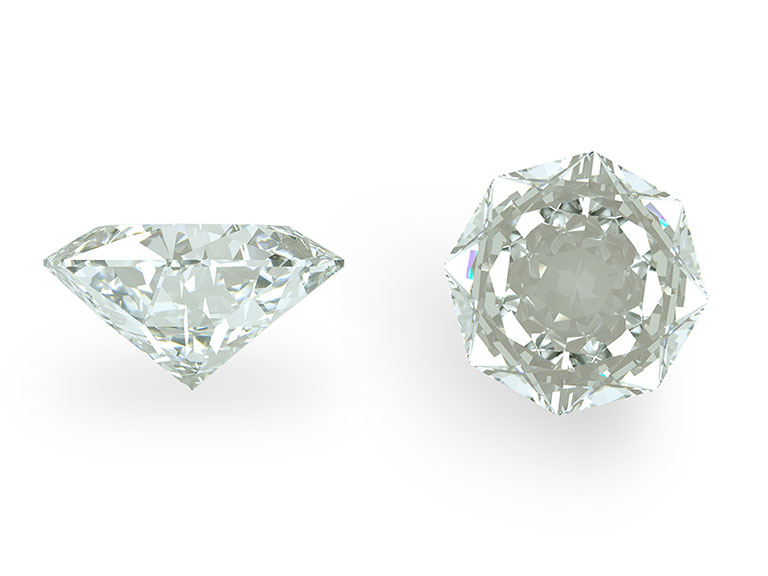
Fair
This diamonds grade is limited by its scintillation. The combination of a shallow crown angle and a somewhat shallow pavilion angle leads to a face-up appearance with a lack of contrast and general darkness.
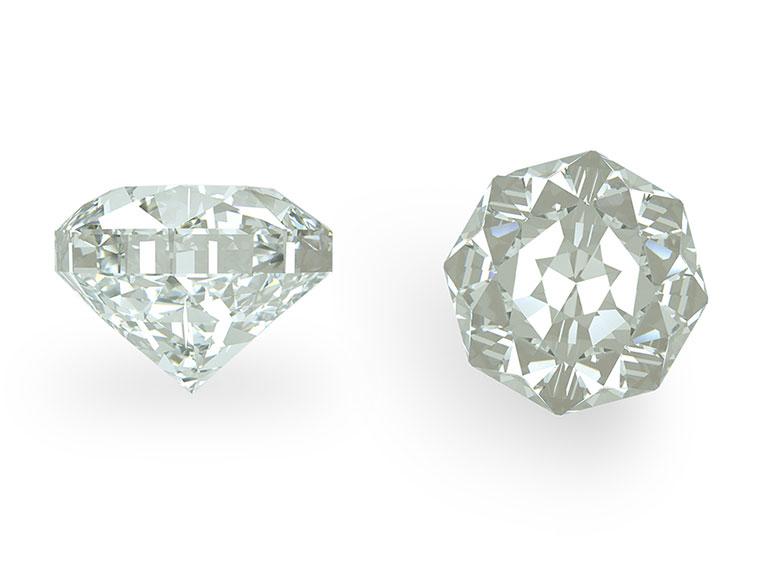
Poor
This diamonds grade is limited by its weight ratio. Although most of the proportions for this diamond are fairly standard, the extremely thick girdle greatly increases the total depth. Therefore, this diamond’s diameter is much smaller than its carat weight would indicate.
Carat
Carat weight
Diamond weights are expressed in metric measurements called carats (ct.) and are expressed as decimal numbers, such as 1.00 ct, 5.23 ct and 10.45 ct.
